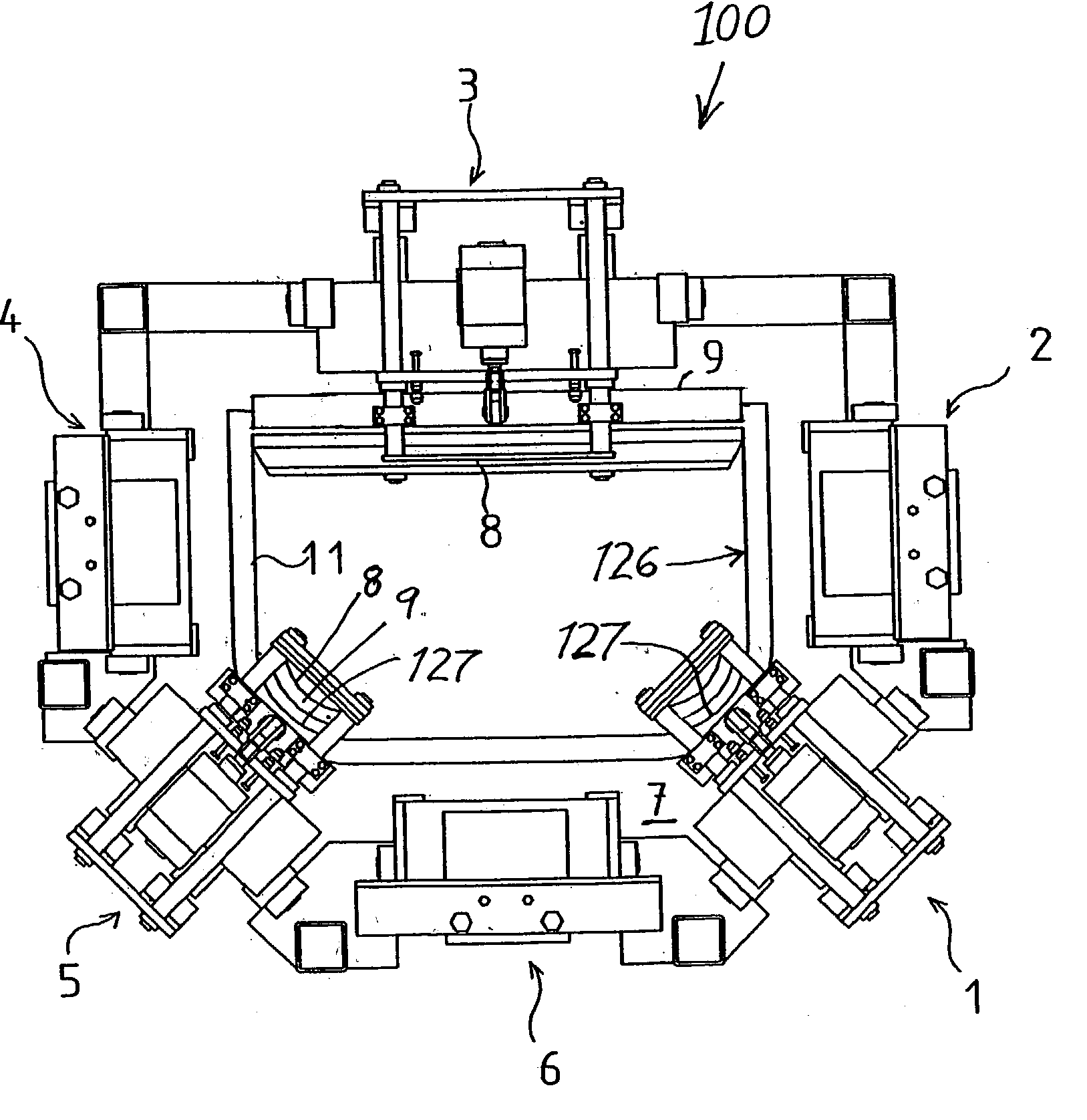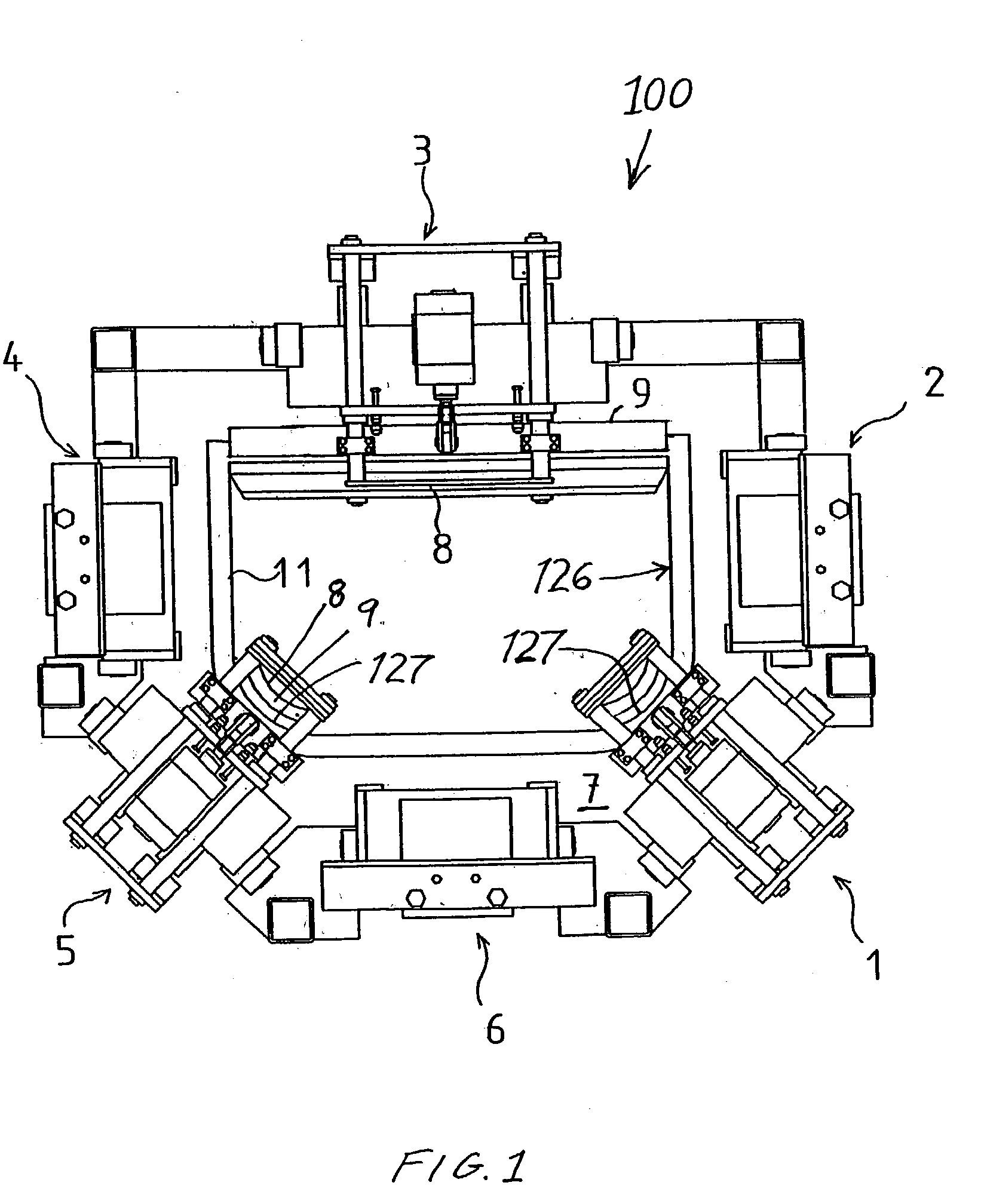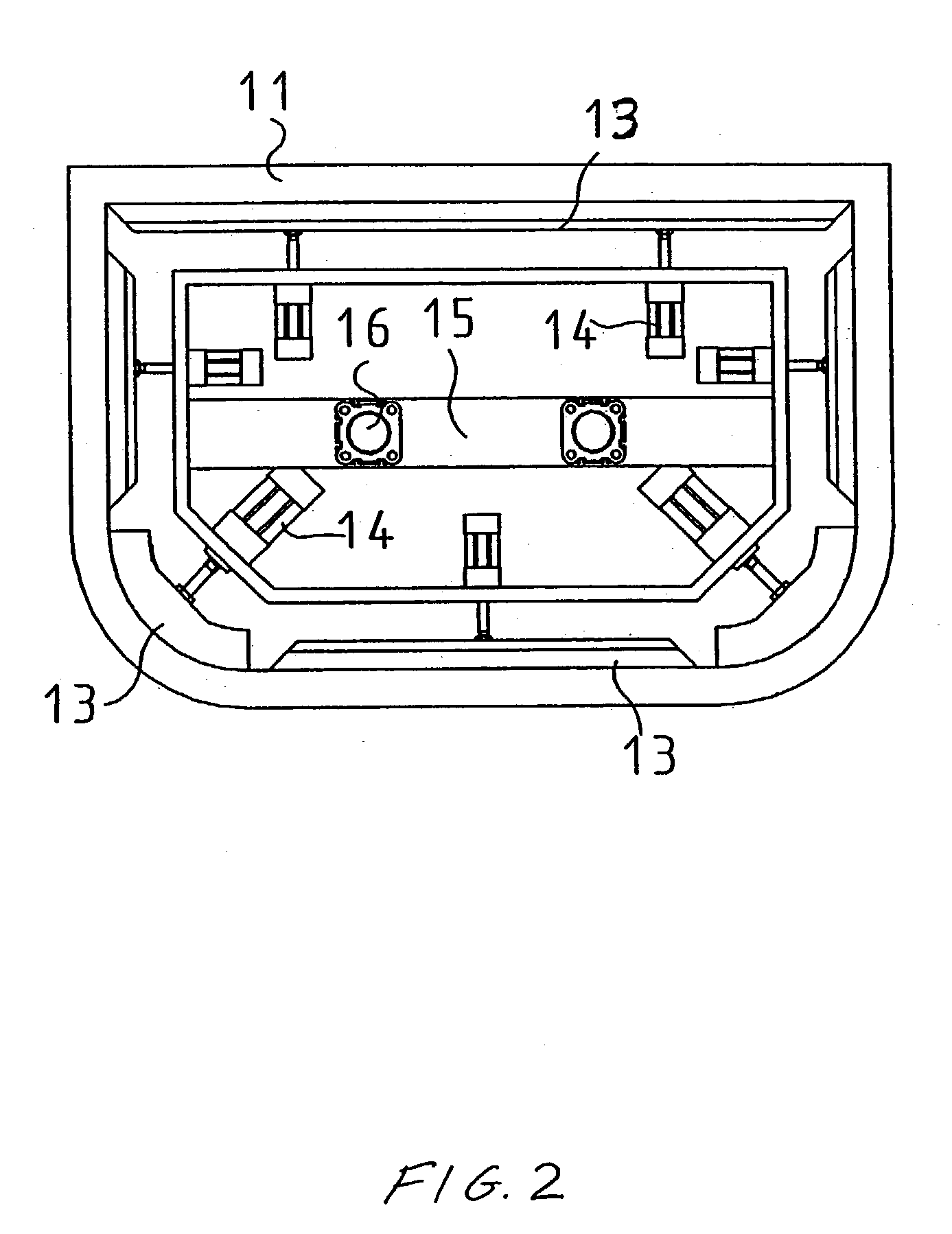Method and apparatus for forming a bent or folded edge rim of a self-supporting thin-walled molded component
a self-supporting, thin-walled technology, applied in the direction of baking, paper/cardboard containers, containers, etc., can solve the problems of high energy consumption of known methods and apparatuses, difficult selection of decorative cover stock materials, and stiff finished free edge rims of finished molded components
- Summary
- Abstract
- Description
- Claims
- Application Information
AI Technical Summary
Benefits of technology
Problems solved by technology
Method used
Image
Examples
Embodiment Construction
[0038] As generally schematically shown in FIG. 1, an apparatus 100 is provided for bending or folding an edge rim of a self-supporting thin-walled molded component. Herein, the term "self-supporting" means that the finished molded component generally maintains its molded shape and supports itself if it is secured at suitable locations, while still allowing for some flexibility and the like, and the term "thin-walled" means that the finished molded component has area dimensions that are much larger than (e.g. at least 10 or even at least 20 or 50 times) the thickness dimension thereof, as is typical of molded interior trim components for motor vehicles in this field. The apparatus 100 comprises six rim bending units 1, 2, 3, 4, 5, and 6 successively arranged around the perimeter of the outline or contour of the molded component. The bending units 1 to 6 are mounted and movably arranged in a machine frame 7. The apparatus further includes a mold 11 that carries and supports an unfini...
PUM
| Property | Measurement | Unit |
|---|---|---|
| temperature | aaaaa | aaaaa |
| temperature | aaaaa | aaaaa |
| thickness | aaaaa | aaaaa |
Abstract
Description
Claims
Application Information
 Login to View More
Login to View More - R&D
- Intellectual Property
- Life Sciences
- Materials
- Tech Scout
- Unparalleled Data Quality
- Higher Quality Content
- 60% Fewer Hallucinations
Browse by: Latest US Patents, China's latest patents, Technical Efficacy Thesaurus, Application Domain, Technology Topic, Popular Technical Reports.
© 2025 PatSnap. All rights reserved.Legal|Privacy policy|Modern Slavery Act Transparency Statement|Sitemap|About US| Contact US: help@patsnap.com



